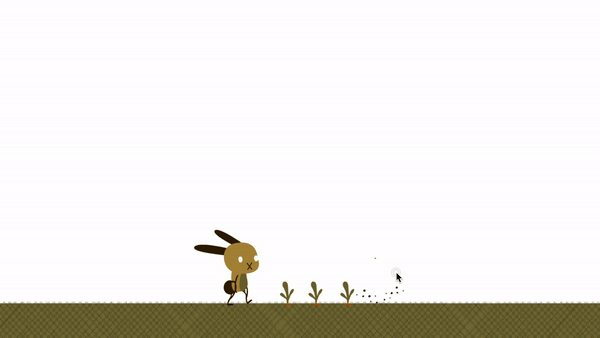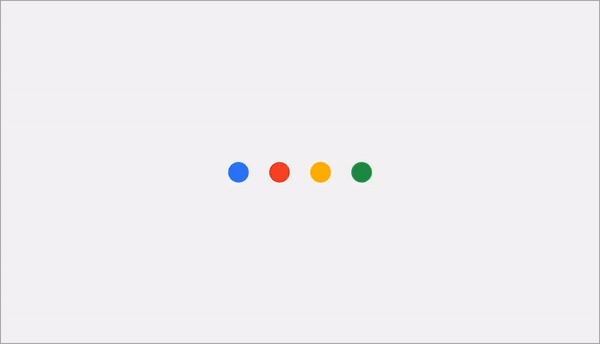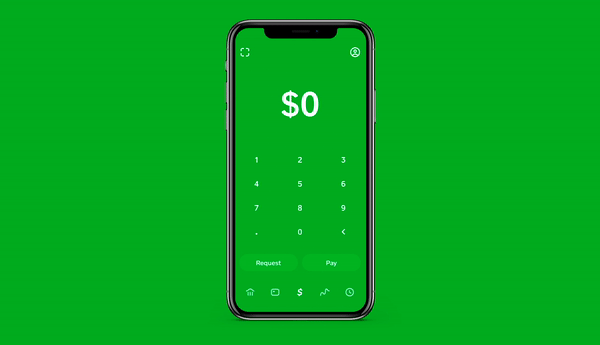To Build a Standout Digital Brand, Look to the Smallest Details
They mean a lot more than you think
The bar for great digital experiences rises all the time—from captivating concepts to exceptional craft. Even innovative features may be copycatted by the competition, creating a sea of sameness, or worse, interchangeable brands.
As creatives, we aspire to concept and design experiences that are both effective and delightful, standing apart from the crowd. Our best work transcends to the level of shareworthy, memorable, and even beloved. And the key to doing so is often in the smallest details.
In so many ways, it’s in the “last 1 percent” where our most important work happens—where the digital platforms and experiences we design can become industry-defining, and where we can help shape the world’s perceptions of brands.
We learned an early lesson on this concept from a lovesick bunny
One of our first company websites featured animated woodland creatures along the footer. They were one of the visual elements of our brand—a bit of fun, and a way for us to share some of our personality. A squirrel hid nuts for the winter. A turtle meandered along with no particular place to go. And a bunny hopped about, pausing for the occasional carrot. We heard from visitors to our site how much they enjoyed the unique characters.
But a small audience of people discovered that the animals were actually interactive, and each had its own unique story to tell. Move your mouse anywhere near the turtle, and he would hide in fear. Grab his shell, and you could toss it around the screen. And with the bunny, you could discover he was interested in finding love and starting a large family … as bunnies are known to do.
Rich interactivity and unique creativity were values of our company’s work, and so we demonstrated them in these smallest details of our website. And the payoff came in the way of share-value—we could trace some of our early clients back to friends-of-friends who had shared the experience. And notably, years later, we still hear from clients and prospective employees who remember the animals on that long-gone version of our website, cementing the idea of just how memorable that experience was.
Of course, the opportunity for detail goes well beyond easter eggs, and certainly beyond randy bunnies. Let’s look at why details matter, and where you can add them to make digital experiences that stand out.
Details can communicate brand values
The fundamental elements of a digital experience are common to the category. Ride share apps need real-time vehicle maps. E-commerce websites need shopping carts. Voice assistants need to indicate when they’re listening and responding.
In the details, though, the best brands remind you what they stand for. Take, for example, Google, a company that makes complex technology simple to use, incredibly fast, and even a little playful. In their Google Assistant UI, you can experience those values in just four dots.
More than just a branding flourish, these dots react to the user’s voice to let him know the assistant is listening, thinking, and ready with an answer. The simplicity, speed, and playfulness with which the dots animate remind you of Google’s values, and differentiate the assistant experience from a field of microphones and voice waves.
Similarly, Delta Airlines kiosks feature a simple detail that underscores the brand’s commitment to making air travel easy and delightful.
When a traveler prints her boarding pass, she’ll see her document move off the screen in perfect time with the printer pushing out the physical version below. The directional communication shows her where the document is, and confirms that it’s the same one she just previewed on the screen. That small moment of thoughtfulness demonstrates the way Delta chooses to do business in every aspect of the traveler journey.
Details create memorability and inspire sharing
Our friends at Richmond’s Need Supply Co., a lifestyle clothing retailer, considered every detail in the experience of fulfilling their orders. Thinking about their customers’ excited anticipation of receiving their goods, the designers at Need added a thoughtful detail to their packages. In bold letters, each one reads “Hello: I’m Here.”
The messaging detail perfectly captured Need Supply’s understated vibe and soon became a defining characteristic of the shopping experience. Customers snapped photos of the packages on their doorsteps, and shared the delightful moment of arrival across their social networks.
In fact, the detail was so memorable that eventually it evolved into Need Supply’s tagline—adorning signage, ads, and even branded goods.
Going the extra step in thinking hard about every detail of a user experience can change the way people think about your brand or product, often in a lasting way.
Sometimes the best details are the ones you omit
Think back to the early days of PayPal. To send money, you entered the recipient’s email address, the dollar amount, the designation (goods or services), and a note. Easy enough, and the industry standard, until a challenger, Cash app, entered the space.
The user landed directly in an oversized input field, blinking and ready to accept the transaction amount. Below was a simple list of people to whom the user had recently sent money. Eliminating fields and steps made it faster and more intuitive, and in turn changed users’ expectations of the category. The challenger was fresh and innovative, while its competitor felt cumbersome and outdated.
We routinely see this in the product design space as well. When Nest arrived with the promise to provide a host of smart-home controls, maybe its smartest detail was also its simplest. In a unique combination of form and function, the thermostat’s intuitive, whole-dial abilities to adjust the temperature made an appliance that was already simple that much easier to use.
Nest caused a huge disruption in the space, thanks in part to the creative way its designers thought about a detail that previously had been overlooked. Just a few years later, the category features myriad innovative designs from touchscreens to voice-controlled units—all trying to capture consumers’ attention the way Nest’s innovation did.
Every detail in its place
Where you add (or subtract) details will vary with each design and brand.
Always start with your user: understand why she’s here and what she needs. Review competitors to establish base expectations for the category, and then challenge which of those assumptions actually benefits the user, and where you can push the boundaries.
And of course, the way you bring those details to life has everything to do with the brand. What does this brand stand for, and how can I communicate those values in simple and subtle ways with my choices in user experience, user interface, and motion?
It’s often the smallest details that can make all the difference. Make your next digital experience a memorable one.










